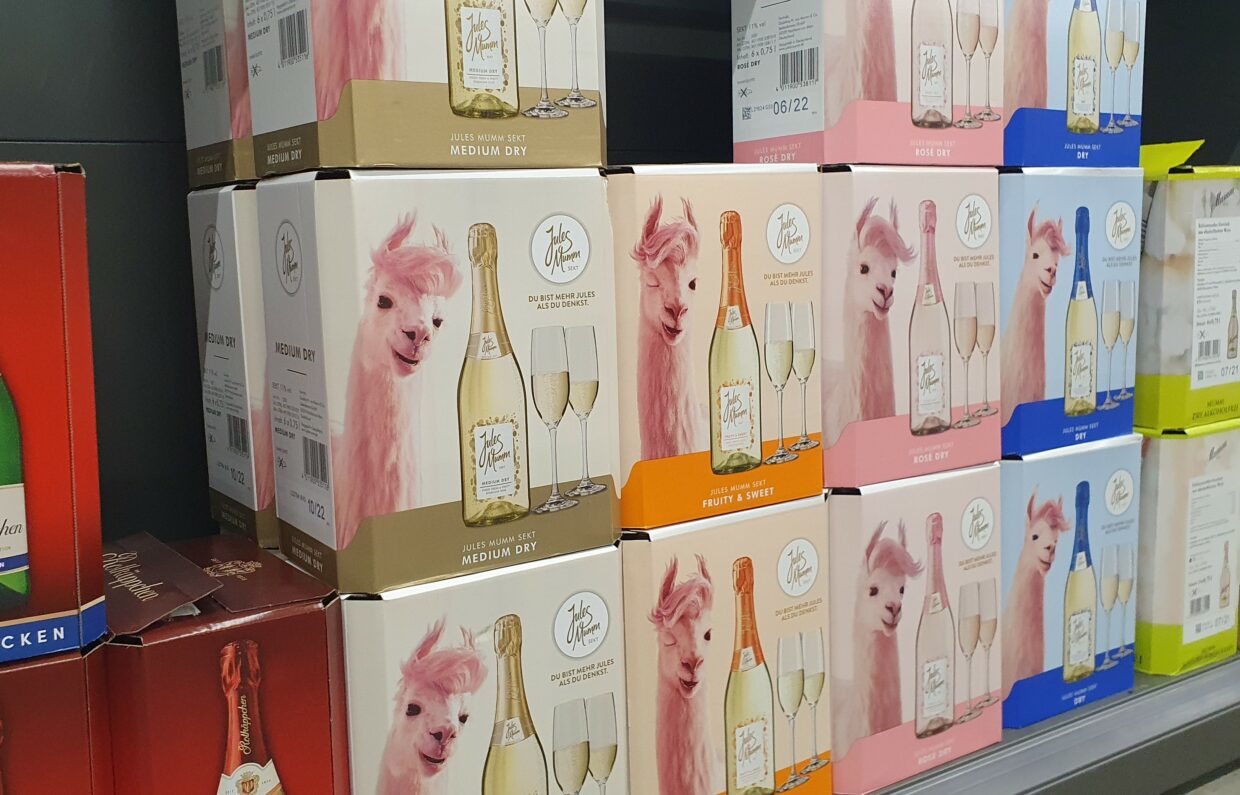Desirable and “valuable”
Lesson 1 shows that times of crisis also affect raw materials and ultimately packaging. The production of glass requires a lot of energy and the high weight also affects logistics costs, both in terms of a truck’s fuel consumption and the capacity on the loading area. Glass will therefore become expensive and its weight will have to be reduced further.
Cardboard and waste paper are a valuable raw material that is traded in dollars on the world’s stock exchanges. It requires a lot of energy and water to produce. The cheapest version of a wine carton is a natural, i.e. brown carton.
Unprinted, it is also the easiest to recycle in the recycling chain because printing ink (often made from mineral oils, polymers and additives) is not used in the first place and therefore does not pollute the groundwater.
It is interesting to note that cheap, industrially produced mass-produced goods are often transported and presented in elaborate cardboard boxes.
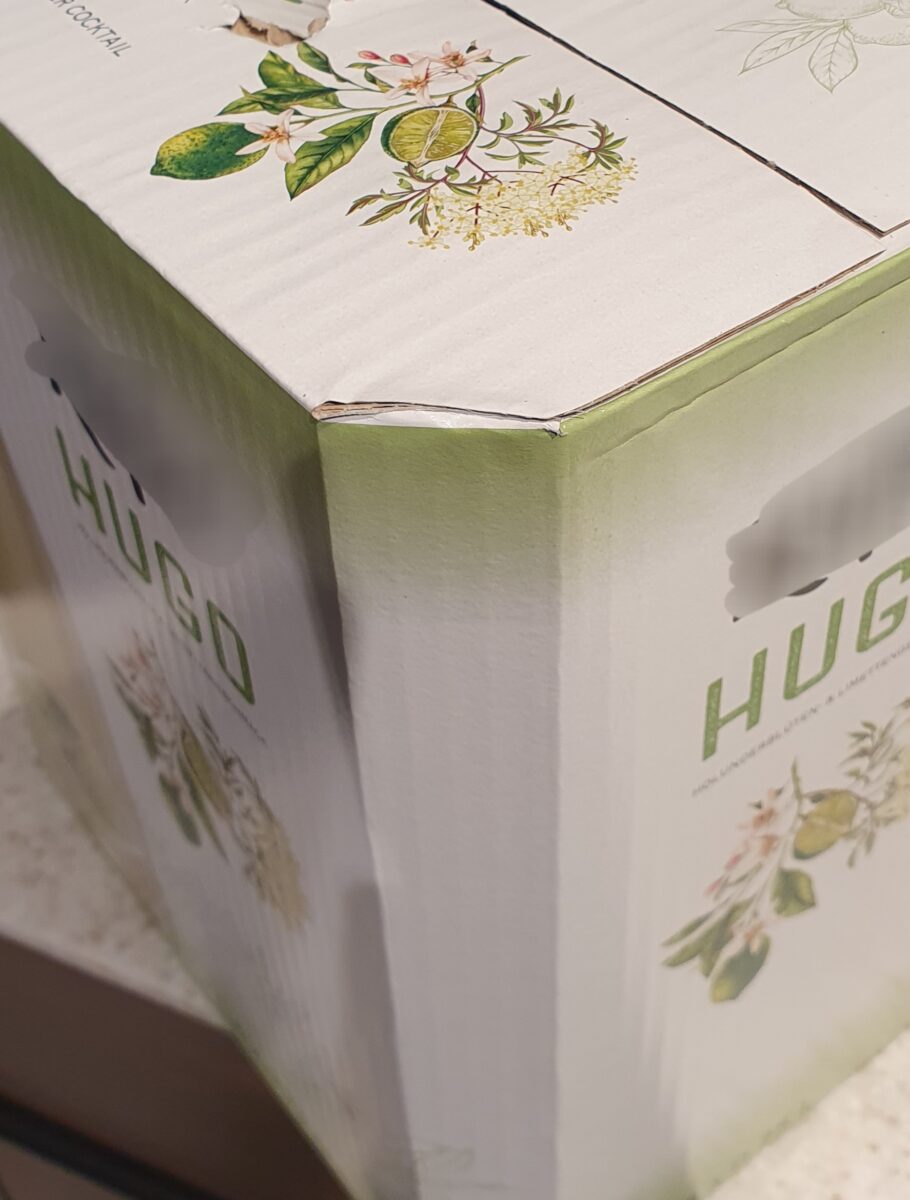
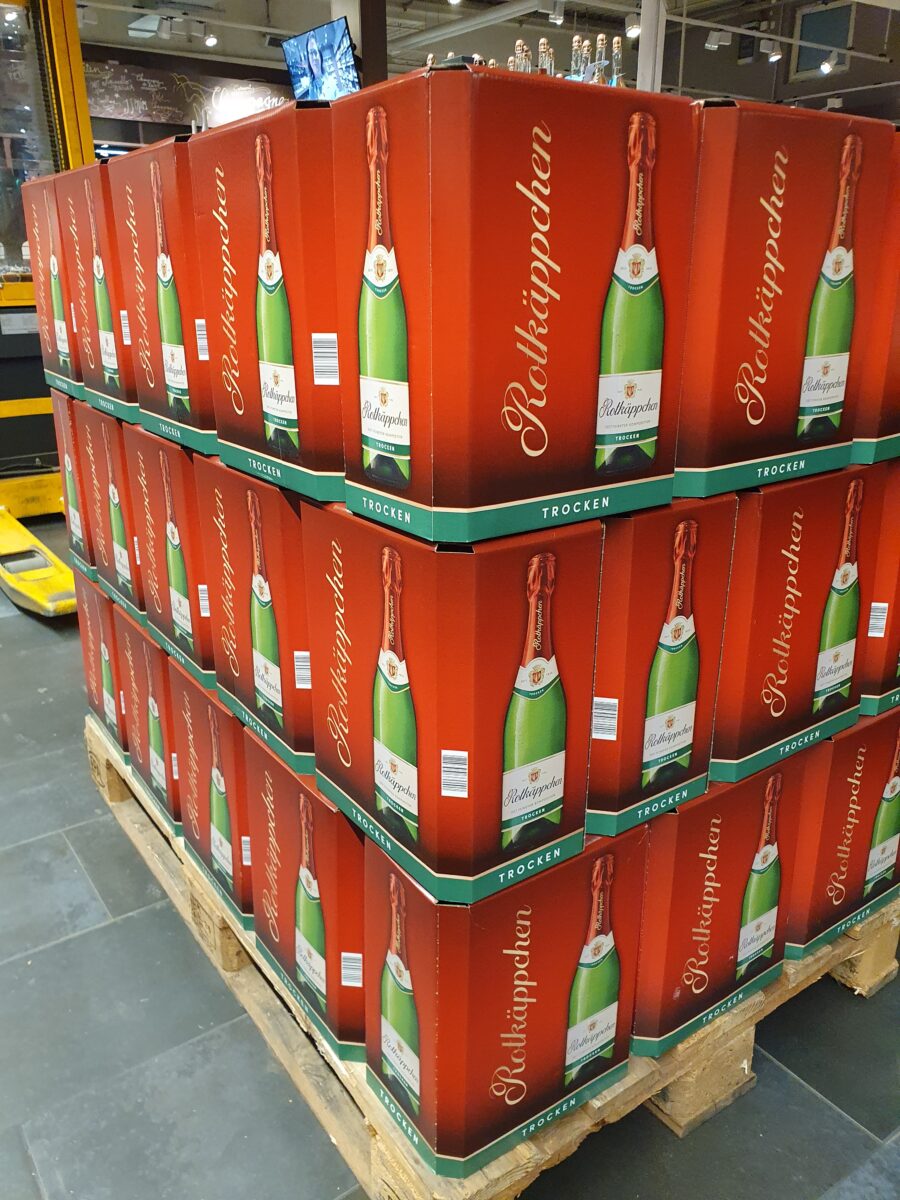
Colorfully printed, lacquered, with gold and glitter, the corners sexily beveled and with a built-in flap to which a plastic thread is attached for precise tearing.
“Attention at all costs”
In the market, we are exposed to many stimuli that influence our purchasing decisions. The winners are often the products that pile up in a particularly colorful way in the best running position.
The old merchant’s rule: where there is a lot of merchandise, there is also a lot of turnover. Hardly any customer likes to reach into empty shelves.
Here, too, we can think for a moment. Have you ever seen a top winemaker go to so much trouble?
Alternatives are being tested
There’s no question about it: carton packaging has to be attractive, especially if new concepts are to prevail behind it. It remains to be seen how customers will decide in the future.
Paper bottles or the bag-in-box packaging that has been around for decades are among the most environmentally friendly and sustainable packaging for liquids. Various scientific studies prove this, taking into account the entire life cycle of packaging. 78% less CO2 emissions, 66% less consumption of primary energy, 73% less water consumption.
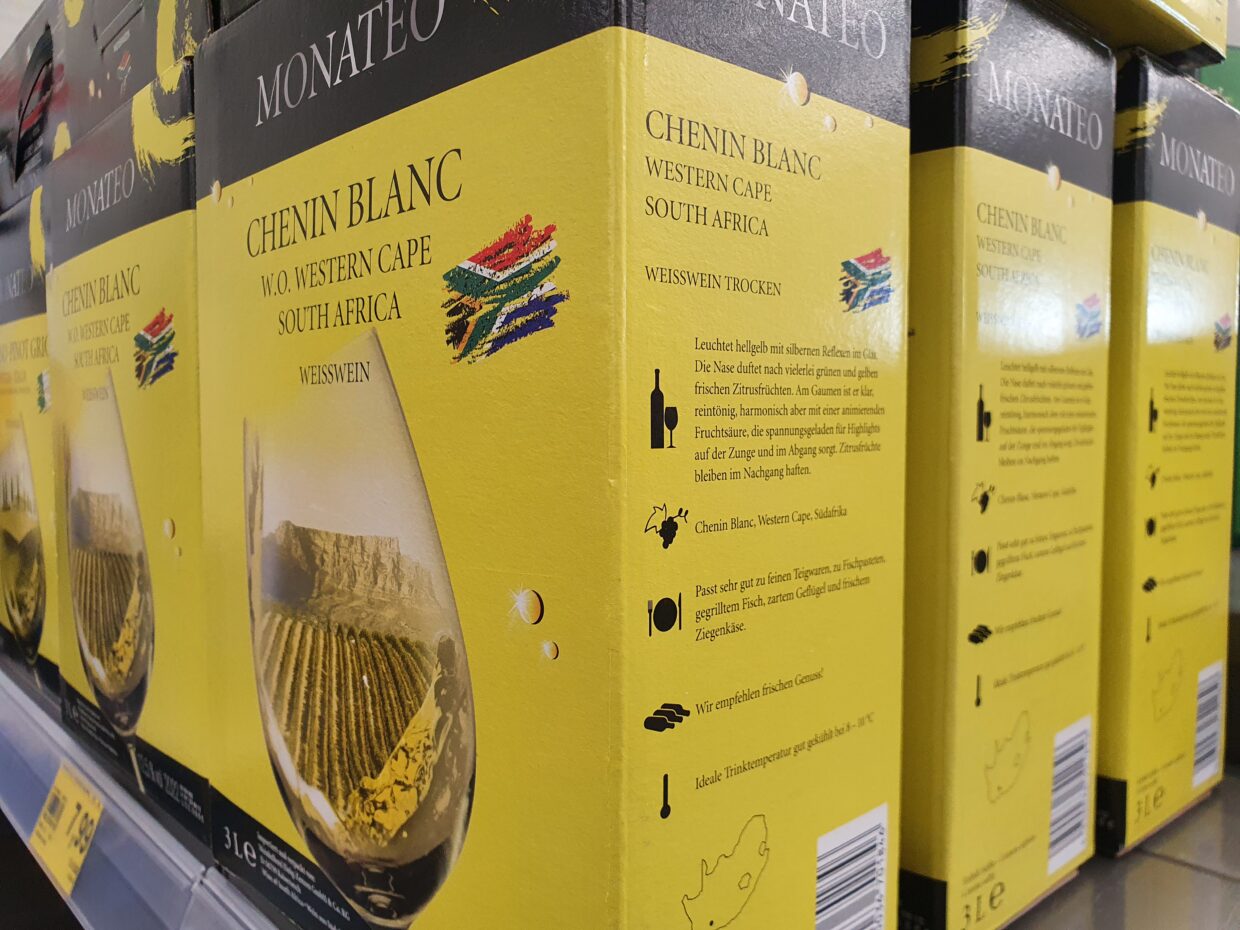
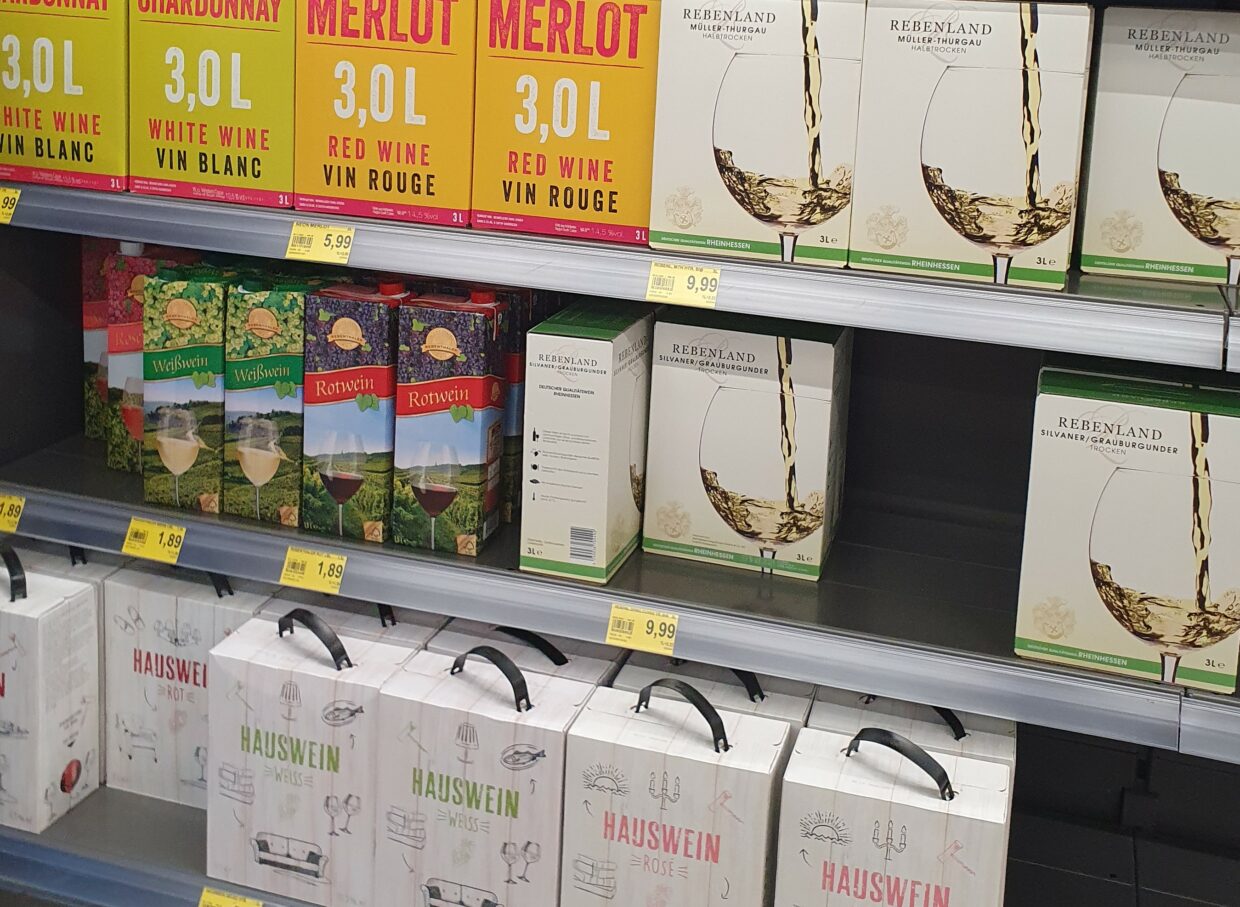
BUT: do we really want to imagine that wines that are specially produced for very long storage are wrapped in composite materials made of plastic film and paper?
High-quality wines that need time to mature in order to present their full range of aromas will certainly continue to be bottled in glass. Measured in terms of the time until these wines are consumed, the high energy costs are more proportionate than for consumer goods that are supposed to be drunk after a year. Traditions and, above all, things that have stood the test of time do not change overnight.
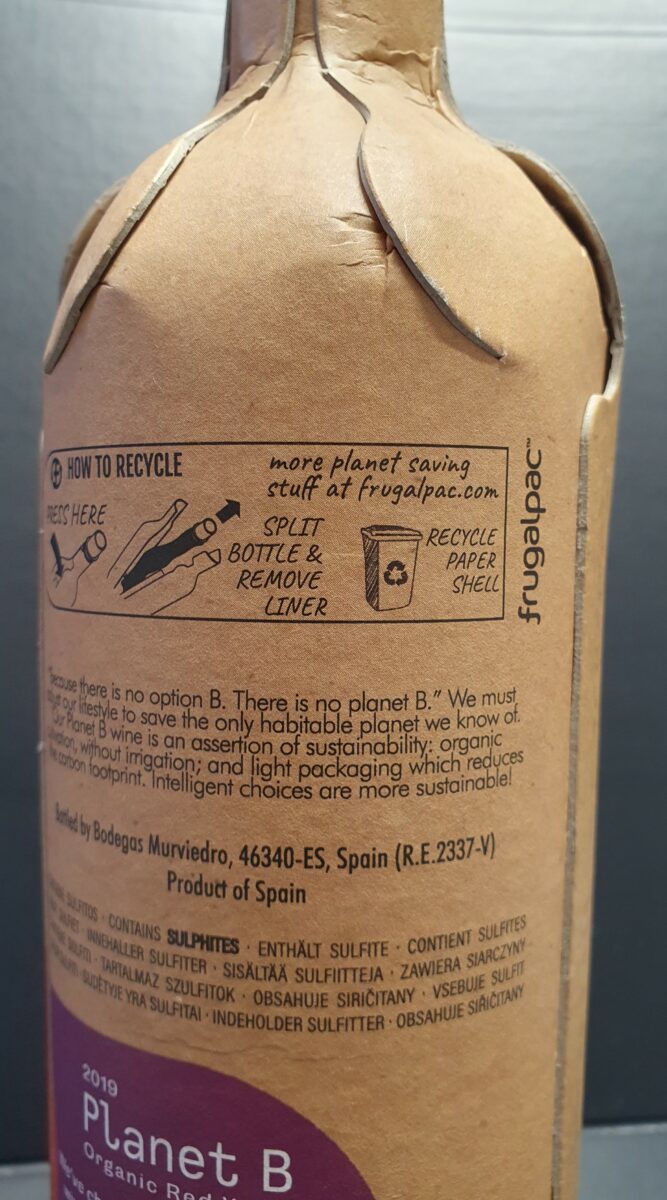
If we want sustainability, we have to be open to new things. We could start with the simplest wines and question whether the characteristics of these mass-produced wines with their rather simple qualities justify such a high consumption of resources.
Wines that are produced for quick consumption should start here. However, we should not hope for change from the producers. The power lies with the consumer.
